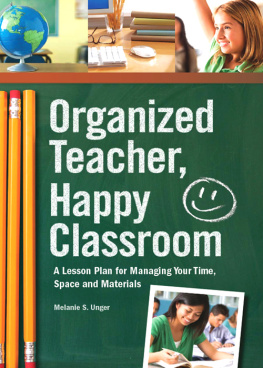

Many of the designations used by manufacturers and sellers to distinguish their products are claimed as trademarks. Where those designations appear in this book and Da Capo Press was aware of a trademark claim, the designations have been printed in initial capital letters.
Copyright 2016 by Kyle Schwartz
All rights reserved. No part of this publication may be reproduced, stored in a retrieval system, or transmitted, in any form or by any means, electronic, mechanical, photocopying, recording, or otherwise, without the prior written permission of the publisher. Printed in the United States of America. For information, address Da Capo Press, 44 Farnsworth Street, 3rd Floor, Boston, MA 02210
First Da Capo Press edition 2016
Published by Da Capo Press
An imprint of Perseus Books, a division of PBG Publishing, LLC, a subsidiary of Hachette Book Group, Inc.
www.dacapopress.com
Library of Congress Control Number: 2016010208
ISBN 978-0-7382-1915-8 (ebook)
Note: The information in this book is true and complete to the best of our knowledge. This book is intended only as an informative guide for those wishing to know more about health issues. In no way is this book intended to replace, countermand, or conflict with the advice given to you by your own physician. The ultimate decision concerning care should be made between you and your doctor. We strongly recommend you follow his or her advice. Information in this book is general and is offered with no guarantees on the part of the authors or Da Capo Press. The authors and publisher disclaim all liability in connection with the use of this book.
Da Capo Press books are available at special discounts for bulk purchases in the U.S. by corporations, institutions, and other organizations. For more information, please contact the Special Markets Department at the Perseus Books Group, 2300 Chestnut Street, Suite 200, Philadelphia, PA, 19103, or call (800) 810-4145, ext. 5000, or e-mail .
Editorial production by Christine Marra, Marrathon Production Services.
www.marrathon.net
Book design by Jane Raese
Set in 10.5-point Caslon 224
10 9 8 7 6 5 4 3 2 1
I would like to dedicate this book to my students
who continue to teach me everyday.
Table of Contents
Guide
Contents
I Wish My Teacher Knew wouldnt exist without the hundreds of children that Ive had the pleasure to teach. Their stories are what make this book come alive. To protect the privacy of my students and their families, certain names and identifying characteristics have been changed.
Doull Elementary is not much different from schools across America. Our sixty-year-old school wraps around a hundred-year-old oak tree. On the south side of our building is a wide green baseball field. To the east are a soccer field and a vibrant community garden where the kindergarten students plant pumpkins and neighbors grow corn, cabbage, and sunflowers. Embedded into our sidewalk are metal plaques that list facts about each planet in the solar system, and our playground is capped with a plastic, gray climbing wall that looks like a rock formation. Our school is full of professionals who dedicate themselves to building on our students strengths and meeting our communitys needs.
Every morning, families who love their children and who value education struggle to wake up sleepy students and send them off to school. School bells ring and doors fling open to let in eager students. There is a stampede of feet rushing up the stairs and busy hands scramble to hang up their coats.
Just like at every school, each day my students bring so much more than just their backpacks to school. There is no magic device that separates the troubles and joys of their home life as they walk through our doors. Each student brings a lifetime of memories, thoughts, and feelings. As teachers we need to honor this. We must recognize how these widely diverse experiences shape our students and impact their academic development.
Our school community is strong, but we face challengeschallenges that are all too familiar to many schools in America. During the 201314 school year, 90 percent of our students lived in poverty. More than half of our students speak a language other than English at home. In my own classroom during the 201516 school year, about one-third of my students qualify to receive special education services. There are many schools, nationwide, with similar statistics.
As teachers, we can sometimes become overwhelmed by the very real challenges our students face. But its equally important to remember our students strengths. We should place equal value on their interests and curiosities, because these passions can motivate our students to become engaged learners. As educators, it is our responsibility to empathize with the realities our students face and understand how those realities impact their learning. By leveraging the resources within our communities, we can work to remove barriers that hamper our students ability to learn.
There is only one way to do this. It is to form relationships with our students and actively build strong communities inside our classrooms. As educators, we are teaching more than subjects and concepts; we are teaching people. James Comer, a leading child psychiatrist once said, No significant learning occurs without a significant relationship. Therefore, as a teacher who is primarily responsible for learning, I am also in the business of relationship building.
The most important thing I do in my classroom is to actively build community. Without that, true, passionate, joyful learning is a hard goal to achieve. I do this by creating relationships with my students and their families. I make sure that they feel cared about and heard.
Building community begins the very first second I see my students. I show up every day to teach an amazing group of third graders. I clap words into syllables, I collect field trip forms and picture money, and I try to make sure Ali doesnt pour glue on Julias head... again. I make sure to greet my students each morning by saying, Im so glad you are here and I care about you, do you believe me?
One day a student responded, Ugh... yes, I know you care about me. You tell me that all the time! That was the best eye roll Ive ever gotten as a teacher! Creating a sense of community continues throughout the school day. It is in the comfortable seats I provide for my students. It happens when I hand them a book I know they will love or show my genuine thrill that a yellow belt in karate was finally earned. It is in the way I comfort them when they are hurt and laugh at inside jokes we share.
There are a million little ways that I actively build community in my classroom. As you read this book, I am sure you will realize that there are a million little ways you do this in your classrooms and offices every day too. Much to my surprise, one of the little ways I built community went viral. It was a simple exercise: I asked a question and listened for the answer.
As a first-year teacher, I worried about how much I didnt know about my students. I explained to them that I wanted to get to know them better. I wrote, I wish my teacher knew... on the board and asked them to complete the sentence.

















